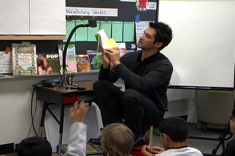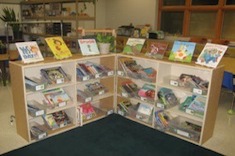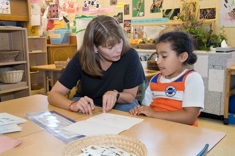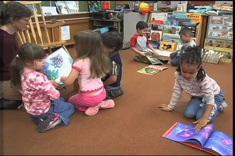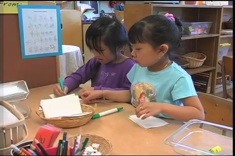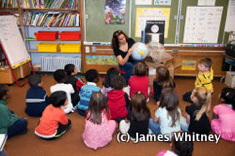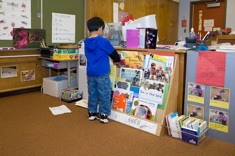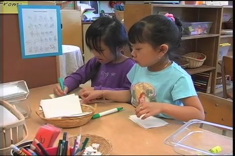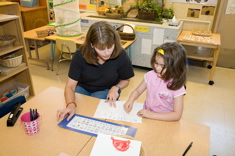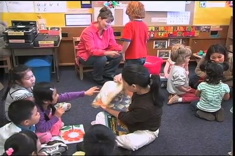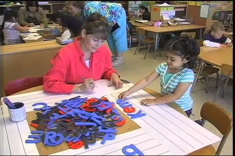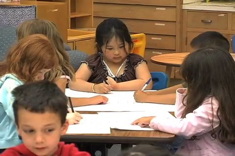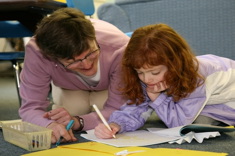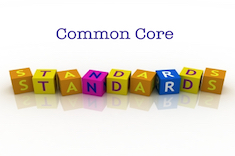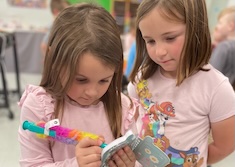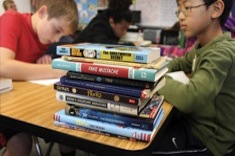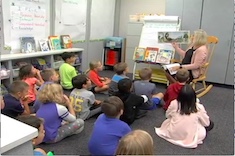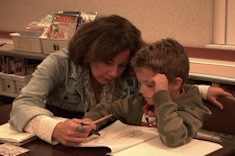Pre-K
Latest Content
Beginning with the End in Mind: Planning Ahead for Closing Activities
Choice Literacy readers share their favorite end-of-year activities that circle back to events from the start of the school year.
Pencil Plans
The care and use of the lowly pencil in classrooms says a lot about what we value and our relationships with students.
Read Alouds for the First Day of School
Choice Literacy readers share their favorite read alouds for the start of the year.
Make it Personal
The connections we make with students and families are what we remember most when all is said and done. Trish Prentice has thoughts on what changes a respected teacher into a beloved teacher.
Creating a Kindergarten Classroom Library
Mandy Robek finds herself overwhelmed when moving from a 3rd grade to kindergarten classroom. Her therapy? Rolling up her sleeves and designing a kindergarten classroom library.
Quick Take: Conferring with Young English Language Learners
In this short video, Ruth Shagoury gives advice to teachers conferring with young English language learners, explaining how other English language learners can be surprisingly helpful in conferences.
Parent Contributions Beyond Instructional Support
Parents want to contribute, but not all contributions are welcome or even helpful when it comes to teaching children how to read and write. Trish Prentice has suggestions for making the most of family skills and willingness to help.
Preschool Morning Message
This five-minute video from Melissa Kolb's preschool classroom shows the value of morning message for teaching literacy skills. Melissa explains the skills children develop during this brief whole-class lesson and sharing time.
34 Languages
What is the starting point for building community in a preschool classroom where almost every child speaks a different first language than their teacher? Melissa Kolb writes about how she gently guides her preschool students early in the year.
Preschool Book Browsing Time
This five-minute video from Kelly Petrin's preschool classroom shows the value of book browsing time. Kelly explains the skills children develop in language, book handling skills, and literacy independence during this time.
Book Matchmaker: Texts to Inspire Our Youngest Readers and Writers
In this installment of the Book Matchmaker series with Franki Sibberson, Franki helps first-grade teacher Danielle think through what books might spark better writing in her young students who are mostly interested in toys and video games.
Preschool Writing Center
In this video from Melissa Kolb’s preschool classroom, children work in the writing center. Melissa explains how she routinely changes the supplies in the center to spark interest in students and make connections to their experiences.
Engaged by the World: Maps, Globes, Reading, and Writing with Young Children
Kelly Petrin and Ruth Shagoury connect globes and children's literature with a map theme to inspire young children to write more and include visual representations in their drafts. While the examples are from a Head Start classroom, the booklist and activities are appropriate for any K-2 students.
Where Am I?: The Power of Wordless Photo Books for Preschoolers
Melissa Kolb shares the power of wordless photo books with preschoolers, explaining how they work in her classroom and demonstrating with a video.
Choosing New Books for Comprehension Strategy Studies with Young Children
Ruth Shagoury and Andie Cunningham share a wealth of books appropriate for comprehension study with young children. The booklist is especially useful for work with English language learners.
Multicultural Books for Beginning Readers
“Why isn’t there an African American Henry and Mudge?” asks a teacher. This question leads Shari Frost on a quest to find the best early readers for multicultural students. In this booklist, she highlights her top picks.
Preschool Letter Detectives
Andie Cunningham works with three-, and four-year-olds as they become "letter detectives." This activity is a wonderful bridge between children's natural curiosity and the alphabet, suitable for preschoolers or kindergartners.
On Not Fretting
Kelly Petrin’s meditation phrase for the day—Do not fret; it only leads to evil—guides her through a home visit with a parent who worries about her daughter’s literacy skills. This is a terrific short read for thinking through how to make encounters with parents less stressful.
Build Fluency with Books That Are Fun for Kids to Read Aloud Over and Over and Over Again
Here’s a booklist of delightful titles that will build fluency skills for students — both as read alouds, and during independent reading.
Many Languages, Many Texts: Book Time in Preschool
In this brief video, Melissa Kolb explains "Book Time" in her preschool class. It's a time when many volunteers read books informally to small groups of children in their home languages.
Keeping the M
Melissa Kolb confers with three-year-old Daniela and explains why approximations are crucial for young literacy learners.
Mix It Up: Helping Young Writers Learn to Confer with Peers and Teachers
Ruth Shagoury models her own writing as a way to introduce the concept of conferring to young learners.
Webbing to Learn: A Writing Strategy to Chart Thinking with Young Learners
Andie Cunningham and Ruth Shagoury explain how webs can be a powerful organizing tool for kindergarten writers.
The Lines are to Write My Words: Phonics in Context
Ruth Shagoury considers the role of phonics in context as she observes a classroom built on a foundation of children's expert knowledge as writers.
Common Core Conversations: Increasing Argumentative Writing
Teachers continue to puzzle over and sort through the terminology in the Common Core related to opinion and persuasive writing. Amanda Adrian and Heather Rader consider terms and teaching strategies.
Use Math Practices to Deepen Friendships
Molly James is inspired by the book Friends Beyond Measure to use math practices to strengthen the bonds of friendship in her kindergarten classroom.
Play Is Powerful: Sharing Student Learning with Families
When kindergarten teacher Becca Burk overheard students’ parents comparing herself and a colleague, she reflected on the importance of play for young learners. In this article, Becca shares ways to communicate the power of play and students’ learning with families.
Field Experience: Supporting Independent Reading, Choice and Stamina
Helping students learn to choose books and develop stamina are important to developing independent readers. Ruth Ayres designed a field experience with opportunities to see minilessons, small group instruction, team meetings and a share session that support independence in readers.
Author Studies for Primary Students
Jen Court shares the benefits of an author or illustrator study and offers tips for getting started in primary grades.
Field Experience: Kindergarten Writers
Spend time with the youngest writers and you will be mesmerized by their writing processes. Ruth Ayres assembled a field experience focused on kindergarten writers.
Browse Content By
Type
Category
- Assessment Tools
- Big Fresh Archives
- Booklists
- Choice Numeracy
- Classroom Design
- Common Core
- Community Building
- Conferring
- Content Literacy
- Digital Literacy
- English Language Learners
- Equity
- Family Relations
- Free Samples
- Guiding Groups
- Leadership
- Literacy Coaches
- Mentor Texts
- Minilessons
- New Teacher Mentors
- Podcasts
- Poetry
- Quote Collections
- Reading Strategies
- Self Care
- Struggling and Striving Learners
- Talking and Listening
- Teacher Study Groups
- Teaching Reading
- Teaching Writing
- Word Study and Vocabulary
Author
- Melissa Quimby
- Nawal Qarooni
- Gwen Blumberg
- Julie Cox
- The Lead Learners
- Hannah Tills
- Josie Stewart
- Ruth Metcalfe
- Mallory Messenger
- Becca Burk
- Jodie Bailey
- Vivian Chen
- Mary Brower
- Tiffany Abbott Fuller
- Stephanie Affinito
- Ruth Ayres
- Leigh Anne Eck
- Heather Fisher
- Shari Frost
- Julie Johnson
- Suzy Kaback
- Gigi McAllister
- Shirl McPhillips
- Melanie Meehan
- Cathy Mere
- Debbie Miller
- Tara Barnett and Kate Mills
- Tammy Mulligan
- Dana Murphy
- Bitsy Parks
- David Pittman
- Brenda Power
- Heather Rader
- Matt Renwick
- Mandy Robek
- Christy Rush-Levine
- Gretchen Schroeder
- Jen Schwanke
- Brian Sepe
- Katherine Sokolowski
- Stella Villalba
- Jennifer Vincent
Grade Level
Choice Literacy Membership
Articles
Get full access to all Choice Literacy article content
Videos
Get full access to all Choice Literacy video content
Courses
Access Choice Literacy course curriculum and training



